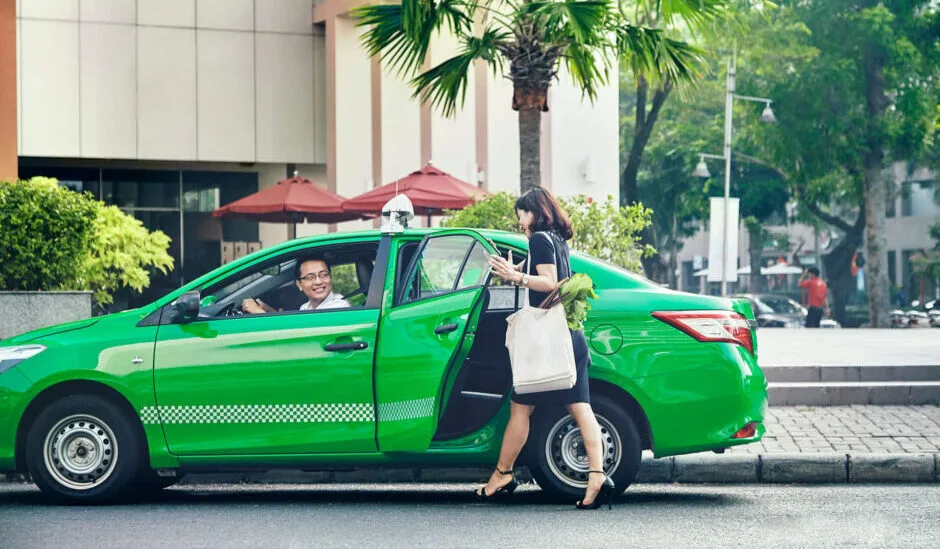Starting with What You Have
In Vietnam’s startup ecosystem, where venture capital has long been seen as a ticket to scale, a quieter but resilient cohort of founders is carving out success through frugality, focus, and resourcefulness. Among them is Van Pham, founder of Smiley Mushroom, a Hanoi-based social enterprise producing organic mushroom products. Her journey began not with a seed round, but with a modest personal investment and a grant, a story in an era when fundraising headlines often overshadow fundamental business building.
Smiley Mushroom originated from a deeply personal mission. Van Pham, a passionate advocate of sustainable agriculture, started growing mushrooms at home while caring for her family. As interest in healthy food products rose, she identified a gap in the local market: reliable, organically grown mushrooms that were both safe and affordable. Rather than wait for perfect conditions or funding, she started with what she had, a small kitchen, technical know-how, and a willingness to experiment.
The turning point came when she secured a US $10,000 grant from Thriive, a program supporting early-stage social entrepreneurs. Instead of using this capital for aggressive expansion or marketing, Van invested in basic production equipment and hygiene upgrades, ensuring compliance with safety standards. It was a disciplined use of capital, focused not on speed but on credibility.
The startup soon began attracting attention from retailers and community groups impressed by the product’s quality and the story behind it. Within a year, Smiley Mushroom was supplying multiple organic shops and co-ops in Hanoi. From that base, it quietly built up operations, expanded product lines, and even began exporting to select markets in Europe and North America.
This first chapter of Smiley Mushroom’s journey offers a compelling lesson: capital alone doesn’t create trust, delivery does. Van Pham’s early success was rooted in her ability to meet real needs with constrained resources. She focused on operations, product before pitch decks, and trust before traction.
In a startup landscape often enamored with blitzscaling and unicorns, stories like Smiley Mushroom’s remind us that bootstrap entrepreneurship remains viable, and in many cases, more sustainable, especially in sectors where relationships and reputation drive long-term growth.
How Bootstrap Founders in Vietnam Turn Constraints into Strategic Strength
Vietnam’s startup landscape is marked by numerous founders who started with very limited capital. While detailed records of bootstrapped journeys are scarce, some verified examples provide insight into how these entrepreneurs turn scarcity into strategic advantage.
A survey by Viettonkin Consulting (2018) involving 268 Vietnamese startups shows that insufficient funding is the biggest challenge, especially in early stages. Yet many businesses persisted through founder capital and small personal networks before securing external support or scaling. UNDP reports emphasize that many social enterprises start as small-scale, community-rooted ventures, relying on grant-based and self-funded models rather than investor backing, particularly in sectors with social impact goals.
Why This Pattern Matters
- Constraint forces clarity: When personal savings are limited, founders deprioritize flashy launches and focus on building viable units, validating products and generating revenue before scaling.
- Bootstrap mindset shapes strategy: With no investor pressure, founders maintain tight financial control, build community networks, and pace growth sustainably.
- Bootstrapped founders bridge gaps differently: They often rely on non-dilutive grants, in-kind support, and deeply local distribution networks instead of seeking rapid fundraising.
- Ecosystem needs to catch up: While there are government programs offering small grants and non-equity support, Vietnam’s startup ecosystem still lacks widespread infrastructure for bootstrapped entrepreneurs, meaning many early-stage ventures rely on personal networks or social enterprise programs for survival.
Emerging Lessons for the Ecosystem
- Bootstrapping is frequently the starting point for many Vietnamese founders, especially in social enterprise or consumer goods.
- More public documentation and case studies are needed on this cohort to inspire and inform future founders.
- Small seed grants, mentor access, and training on lean operations can significantly strengthen these self-funded model trajectories.
Resilience and Reinvention – How Bootstrapped Startups Adapt When Plans Change
Starting with small capital isn’t just about saving costs, it shapes how Vietnamese founders think, adapt, and survive. In the absence of large VC backing, bootstrapped entrepreneurs are often more attuned to customer feedback, operate with tighter teams, and build stronger feedback loops. This frugality doesn’t limit innovation, in fact, it often fuels it.
Take Triip.me, a Vietnam-based travel tech startup, as an example. It began with a simple idea: connecting tourists with local guides. Rather than scaling prematurely, the team focused on learning from each customer interaction and iterated the platform accordingly. With limited early capital, they gradually built out a globally recognized travel experience marketplace, powered by responsiveness and careful listening to users.
Another case is Beeketing, a Hanoi-founded startup that initially offered marketing automation platform for e-commerce website. This bootstrapped journey allowed them to stay nimble and retain full ownership in the early stages, eventually growing into a company attractive enough for acquisition.
Stories like these show how Vietnamese startups, when built under financial constraint, often develop a sharper sense of what really matters. With fewer sunk costs and less pressure to chase artificial growth, bootstrapped founders have more flexibility to experiment, pivot, or even walk away when something isn’t working. Being close to users allows them to learn faster. And operating with limited resources often sparks unconventional approaches, whether in tech, marketing, or product design.
The lesson for the ecosystem is clear: resilience matters as much as capital. Bootstrapped founders thrive when they have access not only to money, but to mentorship on strategic pivots, real-time user feedback loops, and peer communities that normalize trying, failing, adapting. In a context like Vietnam, where many still start with personal savings and necessity-driven grit, building supportive environments for experimentation may be the best investment of all.
The Cost of Going It Alone
Bootstrapping may grant freedom, but it also demands sacrifice. For Vietnamese founders who self-fund their ventures, the emotional and financial burden is especially sharp. Without investor backing, every decision carries personal risk, burning savings, delaying income, or pulling in help from friends and family. This often forces founders to grow slower, spend smarter, and stretch their MVPs further than most venture-funded peers could imagine.
Yet this frugality can become a competitive advantage. Bootstrapped founders learn to operate close to customers, iterate fast, and focus on solving real pain points, because they simply can’t afford to do otherwise. But the path is narrow: without buffer capital, one misstep can be fatal. Hiring prematurely, scaling too fast, or building the wrong feature could mean game over, not a pivot.
This risk profile also shapes who gets to start. Founders from wealthier backgrounds or with overseas experience can afford to bootstrap longer. Meanwhile, those with fewer resources may have great ideas, but no room to fail. That’s why even many promising early-stage Vietnamese startups eventually seek grants, angel backing, or international accelerator programs, to buy time and extend the learning runway.
In this sense, bootstrapping in Vietnam is not just a tactical decision; it’s a structural filter. It selects for the most resilient, but also screens out others too early. And while this self-selection produces some of the grittiest founders in the region, it raises a hard question: how many high-potential ideas never get tested, simply because the founders couldn’t afford the first six months?
When Bootstrapping Isn’t Enough
While bootstrapping builds resilience and sharpens focus, it also has its limits. For startups that reach product–market fit and look to scale, growth capital becomes less of a choice and more of a necessity. Bootstrapped companies may dominate a niche or carve out loyal early users, but expanding to new markets, investing in infrastructure, or attracting top-tier talent often requires financial backing beyond personal means.
This creates a tension: founders who bootstrapped their way through the toughest early days may struggle with the idea of giving up equity or control just as their product gains traction. Yet delaying investment too long can be just as risky as taking it too early. Markets move fast, and a resource-constrained team may miss critical windows of opportunity. That’s why some of Vietnam’s most respected startup stories, like Base.vn or Abivin, began with lean self-funding, but later raised strategic capital to scale responsibly.
Importantly, bootstrapping doesn’t mean avoiding funding altogether. It’s a mindset: proving value before asking others to buy in. The most successful bootstrapped founders tend to view capital not as lifeline, but as fuel, used when there’s already a clear direction, not just an idea. In Vietnam’s evolving startup ecosystem, where institutional VC support is still maturing and public funding remains limited, this pragmatic approach might not just be a philosophy, it may be the only viable path for many.
Ultimately, bootstrapping is a stage, not a permanent state. It teaches clarity, discipline, and grit. But to reach scale, even the scrappiest founder must eventually decide: when is the right time to stop going it alone?







